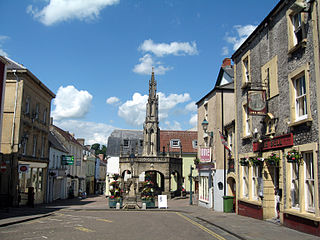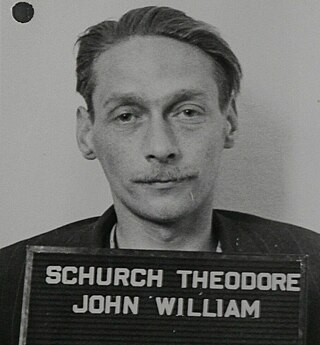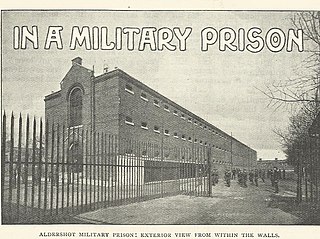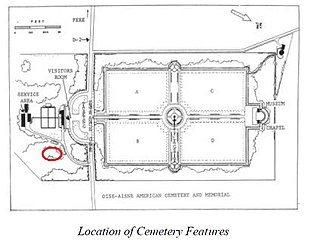
Shepton Mallet is a market town and civil parish in Somerset, England, some 16 miles southwest of Bath, 18 miles south of Bristol and five miles east of Wells. It had an estimated population of 10,810 in 2019. Mendip District Council was based there. The Mendip Hills lie to the north and the River Sheppey runs through the town, as does the route of the Fosse Way, the main Roman road between north-east and south-west England. There is evidence of Roman settlement. Its listed buildings include a medieval parish church. Shepton Mallet Prison was England's oldest, but closed in March 2013. The medieval wool trade gave way to trades such as brewing in the 18th century. It remains noted for cider production. It is the closest town to the Glastonbury Festival and nearby the Royal Bath and West of England Society showground.

Albert Pierrepoint was an English hangman who executed between 435 and 600 people in a 25-year career that ended in 1956. His father Henry and uncle Thomas were official hangmen before him.
Harry Bernard Allen was one of Britain's last official executioners, officiating between 1941 and 1964. He was chief executioner at 41 executions and acted as assistant executioner at 53 others, at various prisons in England, Scotland, Northern Ireland, the Channel Islands and Cyprus. He acted as assistant executioner for 14 years, mostly to Albert Pierrepoint from 1941 to 1955.
Robert Leslie Stewart, from Edinburgh, Scotland, was one of the last executioners in the United Kingdom, officiating between 1950 and 1964.

HM Prison Pentonville is an English Category B men's prison, operated by His Majesty's Prison Service. Pentonville Prison is not in Pentonville, but is located further north, on the Caledonian Road in the Barnsbury area of the London Borough of Islington, north London. In 2015 the justice secretary, Michael Gove, described Pentonville as "the most dramatic example of failure" within the prisons estate.

HM Prison Wandsworth is a Category B men's prison at Wandsworth in the London Borough of Wandsworth, South West London, England. It is operated by His Majesty's Prison Service and is one of the largest prisons in the UK.
Stephen Wade was one of England's executioners from 1940 until 1955. He assisted Tom and Albert Pierrepoint on 31 occasions and also carried out 28 executions as principal executioner.

HM Prison Manchester is a Category A and B men's prison in Manchester, England, operated by His Majesty's Prison Service. It is still commonly referred to as Strangeways, which was its former official name derived from the area in which it is located, until it was rebuilt following a major riot in 1990.
James Inglis was a Scottish man executed for murder, at the age of 29.
Thomas William Pierrepoint was an English executioner from 1906 until 1946. He was the brother of Henry Pierrepoint and uncle of Albert Pierrepoint.

HM Prison Shrewsbury was a Category B/C men's prison in Shrewsbury, Shropshire, England. It was decommissioned in March 2013, and is now open to the public.

Theodore William John Schurch was a British soldier who was executed under the Treachery Act 1940 after the end of the Second World War. He was the last person to be executed in Britain for an offence other than murder.

HM Prison Leicester is a Category B men's Local prison, located on Welford Road in the centre of Leicester, Leicestershire, England. The term 'local' means that the prison holds people on remand to the local courts, as well as sentenced prisoners. Leicester Prison is operated by His Majesty's Prison Service, and is situated immediately north of Nelson Mandela Park.

The use of capital punishment by the United States military is a legal punishment in martial criminal justice. Despite its legality, capital punishment has not been imposed by the U.S. military in over sixty years.
Victor Manson Spencer was a volunteer from Invercargill, New Zealand who fought in the Otago Infantry Regiment of the New Zealand Division in World War I. Spencer was executed for desertion on 24 February 1918, despite later suggestions that he was severely traumatised by shellshock, having fought and survived several campaigns.
Albert Pierrepoint (1905–1992) was the most prolific British hangman of the twentieth century, executing 434 men and women between 1932 and 1955. This table records the locations of each of the executions he participated in, the numbers in brackets being the number of executions he was assistant executioner at, the other numbers are those in which he officiated as chief executioner.

HM Prison Swansea is a Category B/C men's prison, located in the Sandfields area of Swansea, Wales. The prison is operated by His Majesty's Prison Service, and is colloquially known as 'Cox's farm', after a former governor.

A glasshouse, or the glasshouse is a military prison in the United Kingdom.
There is a long history of capital punishment in the Isle of Man. Until the 17th century, many convicted prisoners were executed at Hango Hill.

The Oise-Aisne American Cemetery Plot E is the fifth plot at the Oise-Aisne American Cemetery and Memorial, an American military cemetery in northern France that comprises four main burial plots containing the remains of 6,012 service personnel, all of whom died during World War I.






















